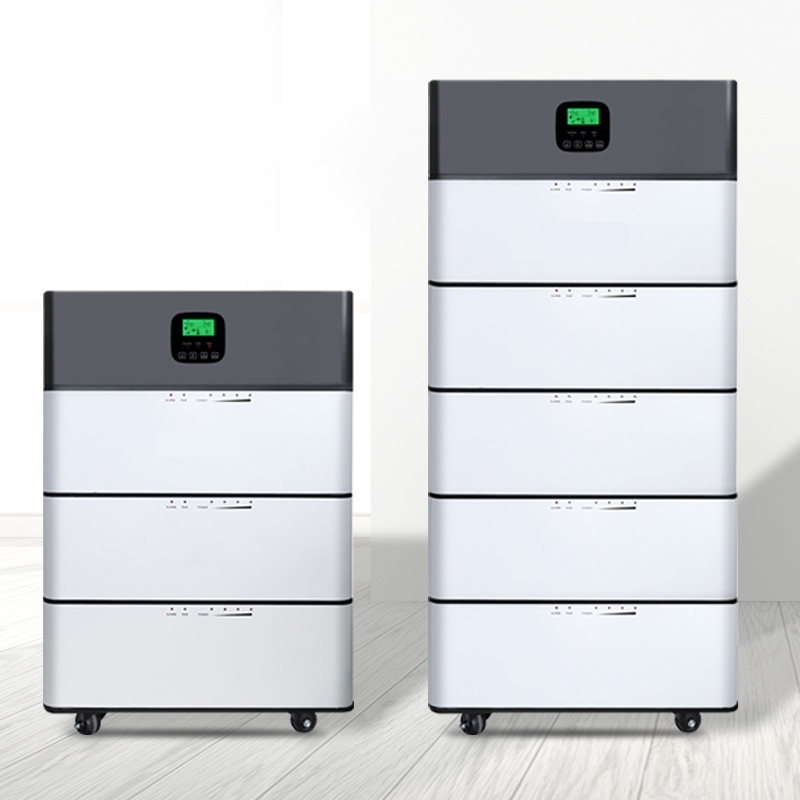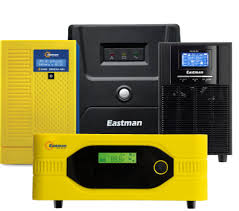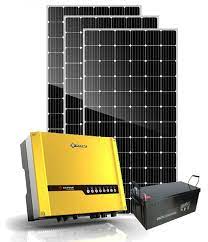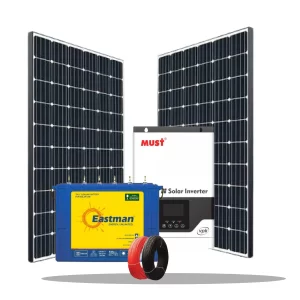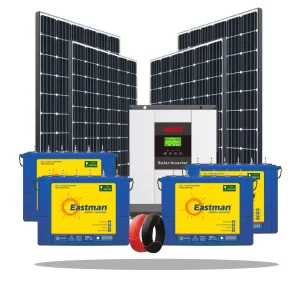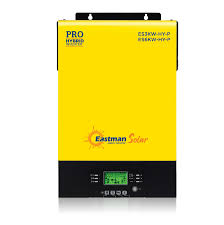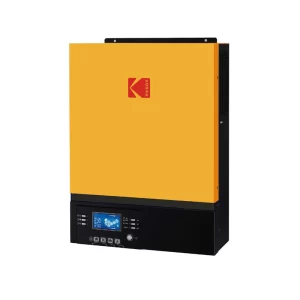Stacked Energy Storage for Solar refers to a modular energy storage solution specifically designed to integrate with solar power systems, where multiple energy storage units are stacked vertically or horizontally to create a scalable and efficient battery storage configuration. This design is particularly useful in both residential and commercial solar installations, where maximizing space, increasing storage capacity, and ensuring efficient energy management are key priorities.
Key Features and Benefits of Stacked Energy Storage for Solar:
- Modular and Scalable Design: Stacked energy storage systems typically consist of individual battery units that can be stacked together in a customizable arrangement. This modularity allows solar energy users to easily scale the storage capacity as their energy needs grow over time. Whether it’s adding extra batteries for increased storage during peak sun hours or adapting to new energy consumption patterns, the stacked design offers flexibility and ease of expansion without needing a full system overhaul.
- Optimized Space Efficiency: For both residential and commercial solar installations, space is often limited. A stacked energy storage solution maximizes available space by arranging multiple batteries vertically or horizontally within a compact footprint. This is particularly advantageous in environments like urban homes, rooftops, or small commercial buildings, where maximizing the use of every square inch is important.
- Integration with Solar Systems: These energy storage solutions are designed to store excess energy generated by solar panels during periods of peak sunlight, when solar generation exceeds consumption. This stored energy can then be used during cloudy days, at night, or during peak demand times, reducing the need to draw electricity from the grid. By integrating seamlessly with solar inverter systems, stacked energy storage enables efficient energy transfer and management between the solar array, the batteries, and the electrical loads.
- Improved Energy Independence: One of the most compelling reasons to use stacked energy storage with solar is the ability to increase energy independence. By storing solar power generated during the day, users can power their homes or businesses off-grid during periods of darkness or low sunlight. This is particularly valuable in remote or off-grid locations where access to the main power grid may be limited or unreliable. Even in grid-connected installations, stacked energy storage helps minimize electricity costs by reducing reliance on utility power, especially during peak pricing periods.
- Enhanced Reliability and Redundancy: Stacked energy storage systems provide an added layer of redundancy. In the event of a failure of one battery module, the remaining stacked batteries continue to operate, maintaining overall system performance. Many systems are also designed with intelligent Battery Management Systems (BMS) that monitor each individual battery’s health, performance, and charge status, ensuring that the system runs at optimal efficiency and extends the life of each battery.
- Seamless Load Shifting and Peak Shaving: Stacked energy storage can be used for load shifting, which allows users to store surplus solar energy during the day and use it during high-demand hours when electricity prices are typically higher. This ability to “shift” energy use can result in significant cost savings, especially for businesses or homeowners who experience high energy costs during peak demand periods. Additionally, stacked energy storage can assist with peak shaving, reducing the demand on the grid during times of high energy consumption, which can help lower electricity bills for commercial users or provide backup power for critical infrastructure.
- Remote Monitoring and Control: Many modern stacked energy storage systems come equipped with advanced monitoring and control systems that allow users to track energy usage, battery health, and system performance remotely through a smartphone app or web interface. This ensures that users can stay on top of energy consumption patterns and make adjustments in real-time, optimizing both the solar generation and storage processes.
- Sustainability and Environmental Impact: By storing excess solar energy, stacked energy storage systems help to reduce waste and optimize the use of renewable energy. This results in a cleaner energy footprint and a smaller carbon footprint for both residential and commercial energy users. Additionally, stacked systems typically use high-efficiency lithium-ion or solid-state batteries, which have a lower environmental impact compared to traditional fossil-fuel-based power generation.
Applications of Stacked Energy Storage for Solar:
- Residential Solar Installations: Homeowners with solar panels can benefit from stacked energy storage systems by storing solar power for later use, ensuring a continuous power supply, and reducing reliance on the grid.
- Commercial Solar Installations: Businesses with solar systems can implement stacked energy storage to offset peak demand charges, improve energy security, and ensure uninterrupted power during grid outages.
- Off-Grid Solar Solutions: In off-grid applications, stacked energy storage is particularly valuable, as it allows users to store enough energy for use at night or during periods of low solar generation, ensuring energy reliability in remote areas.
- Grid-Tied Solar with Backup: For grid-tied systems with backup power capability, stacked energy storage ensures that even during grid outages, users can maintain power for critical operations by drawing from stored solar energy.
Conclusion:
Stacked energy storage for solar is a highly efficient, scalable, and flexible solution for maximizing the benefits of solar power. By allowing for incremental capacity expansion, optimizing space, and ensuring that excess solar energy is captured and utilized effectively, these systems are helping to drive energy independence and sustainability. Whether for a small home solar setup or a large commercial solar installation, stacked energy storage is an essential component for making solar energy more reliable, cost-effective, and practical for modern energy needs.

